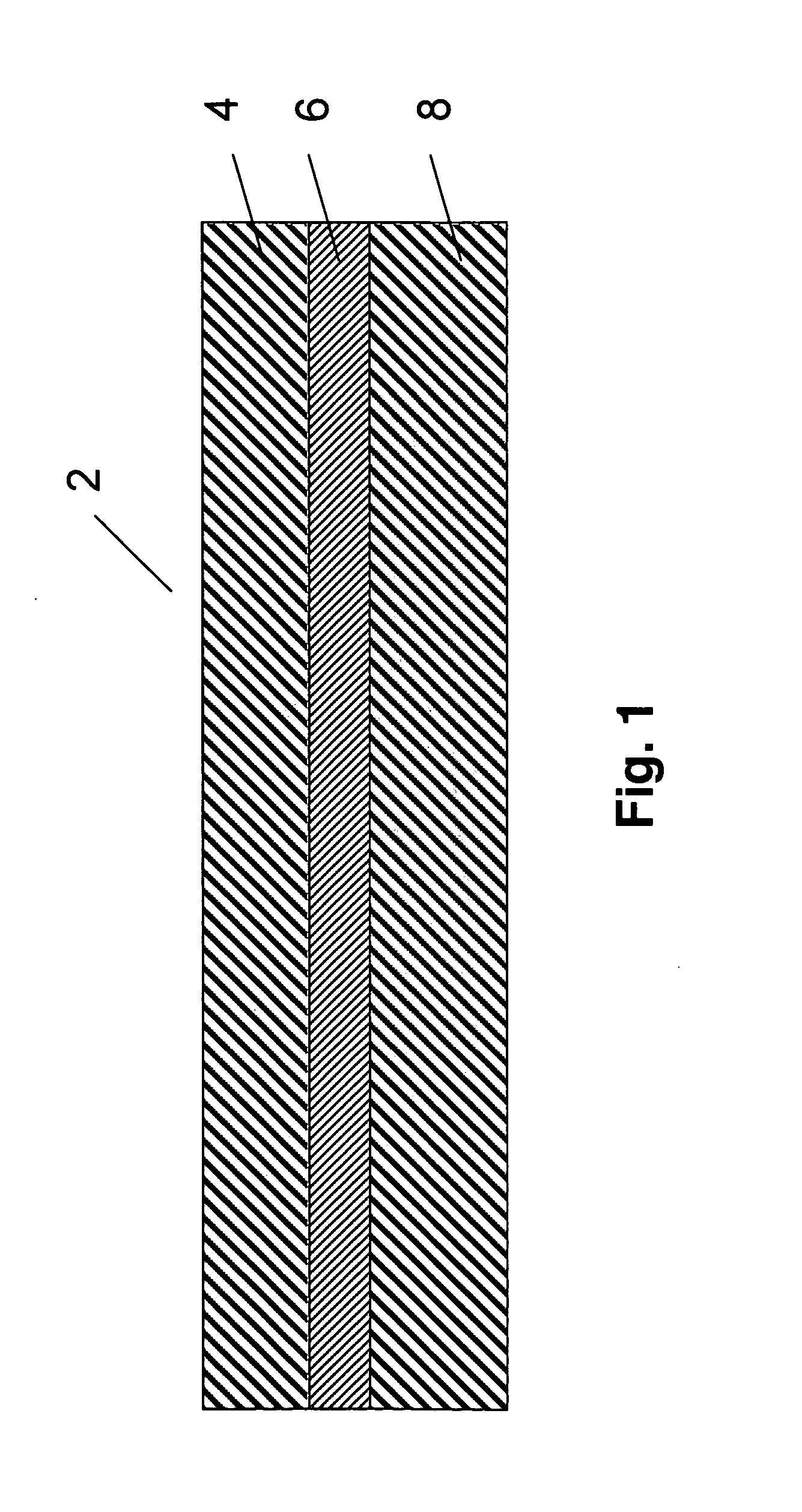Multi-layer rotationally molded low permeation vessels and method for manufacture thereof
- Summary
- Abstract
- Description
- Claims
- Application Information
AI Technical Summary
Benefits of technology
Problems solved by technology
Method used
Image
Examples
example 1
[0067]A vessel composed of a 1.5 mm thick layer of crosslinked polyethylene on the outside, a 1 mm thick layer of ethylene-vinyl alcohol copolymer in the middle and a 2.5 mm thick layer of crosslinked polyethylene on the inside, was manufactured using the rotomolding process. The vessel was manufactured using commercial grades of these materials, with melting temperatures of approximately 125° C. for crosslinked polyethylene and 160° C. for ethylene-vinyl alcohol copolymer.
[0068]The molding cycle consisted of charging the mold with enough crosslinkable polyethylene material so as to form the 1.5 mm (average) thickness external layer. Once this material had melted and fused together, the second layer of ethylene vinyl alcohol copolymer was added to the mold through the vent port forming a 1 mm thick middle layer. Once the middle layer had melted and fused together, a third layer of crosslinkable polyethylene was added to the mold through the vent port forming the 2.5 mm inner layer o...
example 2
[0076]A vessel composed of a 2 mm thick layer of crosslinked polyethylene mixed with ethylene-vinyl alcohol copolymer on the outside, a 0.5 mm thick layer of ethylene vinyl alcohol copolymer in the middle and a 2.5 mm thick layer of crosslinked polyethylene on the inside, was manufactured using the rotomolding process. The vessel was manufactured using commercial grades of these materials, with melting temperatures of approximately 125° C. for crosslinked polyethylene and 160° C. for ethylene-vinyl alcohol copolymer.
[0077]The molding cycle consisted of charging the mold with both crosslinkable polyethylene and ethylene-vinyl alcohol copolymer. Once these two materials had melted and separated to form the first two layers, a charge of crosslinkable polyethylene was added to the mold using a dropbox forming the 3 mm inner layer of the vessel. During this process, the internal air temperature of the molding cycle was monitored and used to determine when each layer had formed and theref...
example 3
[0082]A vessel composed of a 1.5 mm thick layer of crosslinked polyethylene on the outside, a 0.5 mm thick layer of maleic anhydride grafted polyethylene, a 1 mm thick layer of ethylene-vinyl alcohol copolymer, a 0.5 mm thick layer of maleic anhydride grafted polyethylene, and a 2.5 mm thick layer of crosslinked polyethylene on the inside, was manufactured using the rotomolding process. The vessel was manufactured using commercial grades of these materials.
[0083]The molding cycle consisted of charging the mold with enough crosslinkable polyethylene material so as to form the 1.5 mm (average) thickness external layer. Once this material had melted and fused together, maleic anhydride grafted polyethylene was added to the mold through the vent port. Once the maleic anhydride layer had melted and fused together into a layer, a charge of ethylene vinyl alcohol copolymer was added to the mold through the vent port. Once the EVOH layer had melted and fused together, a second charge of mal...
PUM
| Property | Measurement | Unit |
|---|---|---|
| Temperature | aaaaa | aaaaa |
| Length | aaaaa | aaaaa |
| Length | aaaaa | aaaaa |
Abstract
Description
Claims
Application Information
 Login to View More
Login to View More - R&D
- Intellectual Property
- Life Sciences
- Materials
- Tech Scout
- Unparalleled Data Quality
- Higher Quality Content
- 60% Fewer Hallucinations
Browse by: Latest US Patents, China's latest patents, Technical Efficacy Thesaurus, Application Domain, Technology Topic, Popular Technical Reports.
© 2025 PatSnap. All rights reserved.Legal|Privacy policy|Modern Slavery Act Transparency Statement|Sitemap|About US| Contact US: help@patsnap.com



